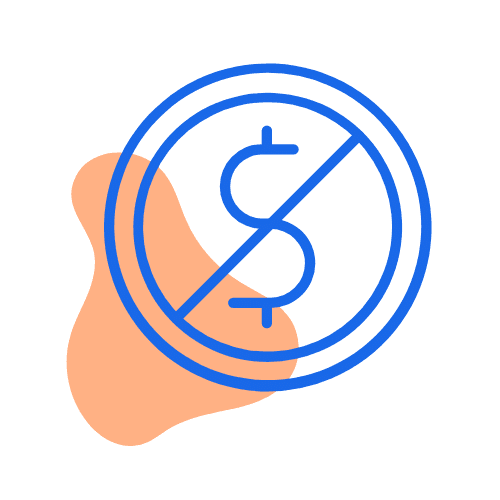A guide to interest rates
Your interest rate will depend on the type of product you have. Don’t expect the same rate for a home and personal loan.
A number of financial products, such as personal loans, home loans, credit cards and savings accounts, come with interest rates. Some types of interest cost you money, while you can earn from others. For instance, your savings account interest rate will earn you money, whereas interest on your credit card will cost you. Interest rates can be structured and charged depending on the lender and the product. It's important to know how interest rates work, so you know how to compare products and find the right one for you.
What are interest rates?
Interest rates are a percentage of a principal sum of money that is lent, borrowed or deposited. If you borrow money, you will usually pay interest on the money that you borrow. For money that is deposited (e.g. into a savings account or term deposit) or lent by you, you will earn interest on the principal sum.
There are two types of interest: simple and compound.
- Simple interest. This is calculated on the principal sum, or original amount, of a loan or savings/deposit. This form of interest is cheaper if you are paying it down on a loan.
- Compound interest. This is calculated on the principal and on the accumulated interest (i.e. "interest on interest"). This form of interest is preferable if you have investments or savings that you are being paid interest for.
The total interest either earned or paid depends on the principal sum, the interest rate, whether the interest is simple or compound, the compounding frequency and the length of time over which it is lent, borrowed or deposited.
What does p.a. mean?
You will often see "p.a." after the percentage symbol in an interest rate. It stands for "per annum" and means the rate is an annual rate. With financial products, annual interest is calculated regularly (usually daily) as you make regular repayments to a loan or put more money into your savings account.
Why is the annual interest rate important?
The annual interest rate is important because it gives you a good idea of how much money you are going to earn from your investments (in the case of savings accounts and term deposits) or how much you are going to pay on your finance (in the case of loans and credit cards).
How is interest calculated?
Interest is calculated differently, depending on whether the interest is simple or compound. The formulas for each are as follows:
- Simple interest. You can calculate simple interest by multiplying the principal sum by the rate and the term of the loan. So the formula is: I = P x R x T
- To demonstrate, say you have a loan of $30,000 at a rate of 8% p.a. on a loan term of 3 years. The calculation will look as follows: 30,000 x 0.08 x 3 = 7,200Therefore, over the life of the loan, you will pay $7,200 in interest payments.
- Compound interest. The formula for compound interest is a little more complicated:A = P(1 + r/n) ^ ntP, once again, is the principal sum of the amount borrowed. r is the annual interest rate and n is the number of times interest is compounded in a year. The term in years is t, and A is the total sum on money accumulated, including interest, after t years. If we use the same amounts as above and imagine that the total amount of times that interest is compounded in a year (n) is 4, the sum is the following:A = 30,000(1 + 0.08/4) ^ (4 x 3)A = 30,000 x 1.02 ^ 12A = 30,000 x (1.27)A = 38,100This means that the total amount repaid over 3 years would be $38,100. If we then subtract the principal from this ($30,000), we can calculate that the total interest over this period with a compound interest rate would be $8,100.
Why do you pay interest?
Paying interest on finance, such as credit cards, home, personal, business and car loans, is done for a variety of reasons. Predominantly, it's because lenders are businesses and receiving interest payments for lending money is how they make a profit. Interest rates are also paid for the convenience of acquiring finance that you did not earn or save and for the inconvenience on the part of the borrower of lending it.
Interest rates are also charged in case borrowers default on loans. For example, default rates on personal loans stand at around 3.5%, but if interest is paid on all loans lent, that risk is mitigated and accounted for and lenders will still make money, even with this expected loss.
Is it better to have a higher or a lower interest rate?
Whether you need a high or a low interest rate will depend on the type of financial product that you're talking about. If you're looking for a term deposit or savings account, you'll typically want to get the highest interest rate possible, so that your investments make you the most money possible. However, if you're looking for a loan, you'll generally want to aim for lower rates.
Paying a lower interest rate on a loan will usually mean that you pay less money over the life of the loan. However, this is not always the case as some loans may have low rates but high fees attached. Always look at the comparison rate when considering the overall cost of a loan.
You may also want to opt for a loan with greater flexibility or additional features that cost slightly more, but are specifically beneficial to you, such as a redraw facility or repayment flexibility. Therefore, it isn't always necessarily better to have the lowest interest rate on the market.
What is the comparison rate?
The comparison rate is a representative rate that includes both the interest rate and fees. It's useful to look at the comparison rate when considering products as it shows you the true cost of the loan, not just the rate or the fees separately.
What is considered a high interest rate?
"High" interest rates will vary depending on the financial product in question. Below, we shall outline typically "high" interest rates for a variety of financial products:
- Savings account. 1-1.3% p.a.
- Term deposit. 1-1.3% p.a.
- Credit card. 20-22% p.a.
- Personal loan. 16-18% p.a. for standard personal loans. Payday loans, on the other hand, can have an interest rate of up to 35% p.a.
- Car loan. 15-17% p.a.
- Home Loan. 4.5-5% p.a.
- Business loan. 12-13% p.a. However, this will vary largely depending on what type of business finance you are applying for.
What to weigh up: The pros and cons of a low interest rate
- Potentially lower repayments. In the case of loans, having a lower interest rate can often mean that your repayments are lower.
- Potentially lower overall cost. Loans will usually end up costing you much less over their lifetime than if you had a higher interest rate.
- Less yield on investments. If you have a low interest rate on your savings account or term deposit, you will earn less money.
- May have high fees. Some lenders drive down their interest rates but have very high fees attached, which may cost you more overall.
- Less flexibility. With loans, you may find that because your interest rate is low, you have less flexibility in what you can do with your loan.
What are the different types of interest rates?
There are two main types of interest rates: fixed and variable.
- Fixed interest rates. This is a set interest rate that is essentially "locked" for the duration of your loan term. The rate you agree to in your loan contract is guaranteed to remain in place until you close the loan out at the end of the term.
- Variable interest rates. This is a rate that may change during your loan term. This may be more likely for some products than for others. For example, personal loans can come with variable interest rates but it is unlikely for the rate to change during the loan term while it's much more likely a home loan with a variable rate will change.
How is interest charged on different financial products?
Interest works very differently depending on the type of product you have:
Credit cards
Credit cards come with variable, annual interest rates. The rates vary a lot depending on what features the card offers, but you can generally find a basic, no-frills credit card for between 8-13% p.a. while a rewards or feature-packed card can set you back between 17-22% p.a.
You will find two types of interest rates on a credit card: purchase rate and cash advance rate. The purchase rate is what you're charged to make purchases on the card and the cash advance rate is what you're charged to withdraw cash using the credit card. Credit cards can also offer special interest rates such as introductory 0% rates or balance transfer rates.
Another feature of credit cards is interest-free days. This refers to the period of time between making a purchase and when you will be charged interest on that purchase. If you pay off your credit card balance during this period, you will not be charged interest. Most credit cards offer 55 interest-free days.
Personal loans
Personal loan interest rates can be fixed or variable and are annual rates. These rates used to very much reflect the market, specifically the cash rate, but lenders have recently been moving towards personalising interest rates based on how risky it is to offer you the loan.
This is why there are now two types of interest rates you will see advertised for personal loans: set rates and risk-based rates. Set rates will be given to everyone who is approved for a personal loan for that lender. Lenders offerings risk-based interest rates will be advertised using a range, for example, 7-18% p.a., and you can be approved for an interest rate between that range. Usually, you can get an estimate of the rate you will receive before you fully apply for a loan and without it affecting your credit score.
Home loans
Home loan interest rates can also be fixed or variable. Fixed interest rates are guaranteed not to change whereas variable rates may fluctuate. With home loans, fixed interest rates usually only apply for the initial stage of a loan, for example five years. Variable home loan interest rates can change quite frequently as they are heavily influenced by factors in the market, especially the RBA Cash Rate. The interest you are charged will generally be calculated daily. Home loans can also either be principal and interest, meaning you're repaying both the interest you're being charged and the original amount you borrowed, or interest-only, so you are only repaying the interest accruing on your debt.
Savings accounts
Savings accounts work differently from credit accounts because the interest rates earn you money rather than cost you money. All savings accounts come with a variable base rate, with most calculated daily on your principal balance and paid into your account monthly. This is referred to as compound interest: the interest repayments you earn then go on to earn interest themselves.
Some savings accounts can also offer you bonus interest on top of the standard base variable rate, which may be for an introductory period, such as for the first three months after opening the account or applied monthly if you meet certain conditions, such as regularly depositing money into the account.
How should you compare interest rates?
Keep the following in mind when comparing interest rates:
- The actual rate. Look at how competitive the interest rate is when comparing. While the cheapest isn't necessarily the best, a better interest rate can do a lot to save you money in the long run.
- The comparison rate. The comparison rate includes both the interest rate and any upfront and ongoing fees. It is more representative of the true cost of the loan and can give you a good idea of how competitive it is overall, so it's useful to compare.
- Like-for-like. While comparing interest rates across products is a good idea, make sure the products you are comparing are similar. For example, you might compare one credit card to another one with a much lower interest rate but it doesn't mean it comes with the same features. See what features and benefits the products offer and ensure you are comparing similarly-featured products.
Compare interest rates across loans, credit cards and savings accounts
Why compare personal loans with Finder?

We're free
Our personal loan comparison is completely free to use. There are no costs at all for you to use our database to find a better deal. Better still, we regularly run exclusive deals that you won't find on any other site.

We're experts
We've researched and reviewed hundreds of loans as part of our Finder Awards. Our database and tables are always up-to-date and our in-house experts regularly appear on Sunrise, 7News and SBS News.
We're independent
We are independently owned and have a mission to help Australians make better financial decisions. That means our opinions are our own and you can compare nearly every personal loan in Australia (and find a better deal).

We're here to help
Since 2014, we've helped 300,000+ people find a personal loan by explaining your options simply. You don't need to give us any details to use our comparison. We're here to help you make a decision.More guides on Finder
-
Personal loan rejection: Reasons and how to avoid it
There are a number of reasons why your personal loan application may be rejected.
-
Guarantor personal loans
If you don't quite meet the criteria for a personal loan, applying with a guarantor can help get your application over the line.
-
What is the minimum income for a personal loan?
Not sure how much you can borrow based on your income? If you're looking for a personal loan, find out how lenders determine how much you can borrow and how to see if you're eligible based on your income.
-
Personal loans for new employees
Just started a new job but need money straight away? You can apply for a personal loan with selected lenders now.
-
Personal loans for self-employed borrowers
Find out what personal loan options are available to you as a self-employed person and how you can be approved.
-
How to Transfer Your Personal Loan to Another Bank
How you can save by switching personal loans.
-
How much is your dog really costing you?
A dog can add a lot of value to your life. Find out the real cost of getting a pet and if you can afford it.
-
How do personal loans work?
Personal loans can be complicated, but we've simplified the process for you so you can focus on finding the best deal.
-
Easy personal loans
Not all personal loans come with endless documentation. Some lenders specialise in quick and easy application processes.
-
Loans for casual and part-time workers
Find out your loan options if you're casually employed, or are part time and don't work a full 40-hour week.
Ask an Expert


